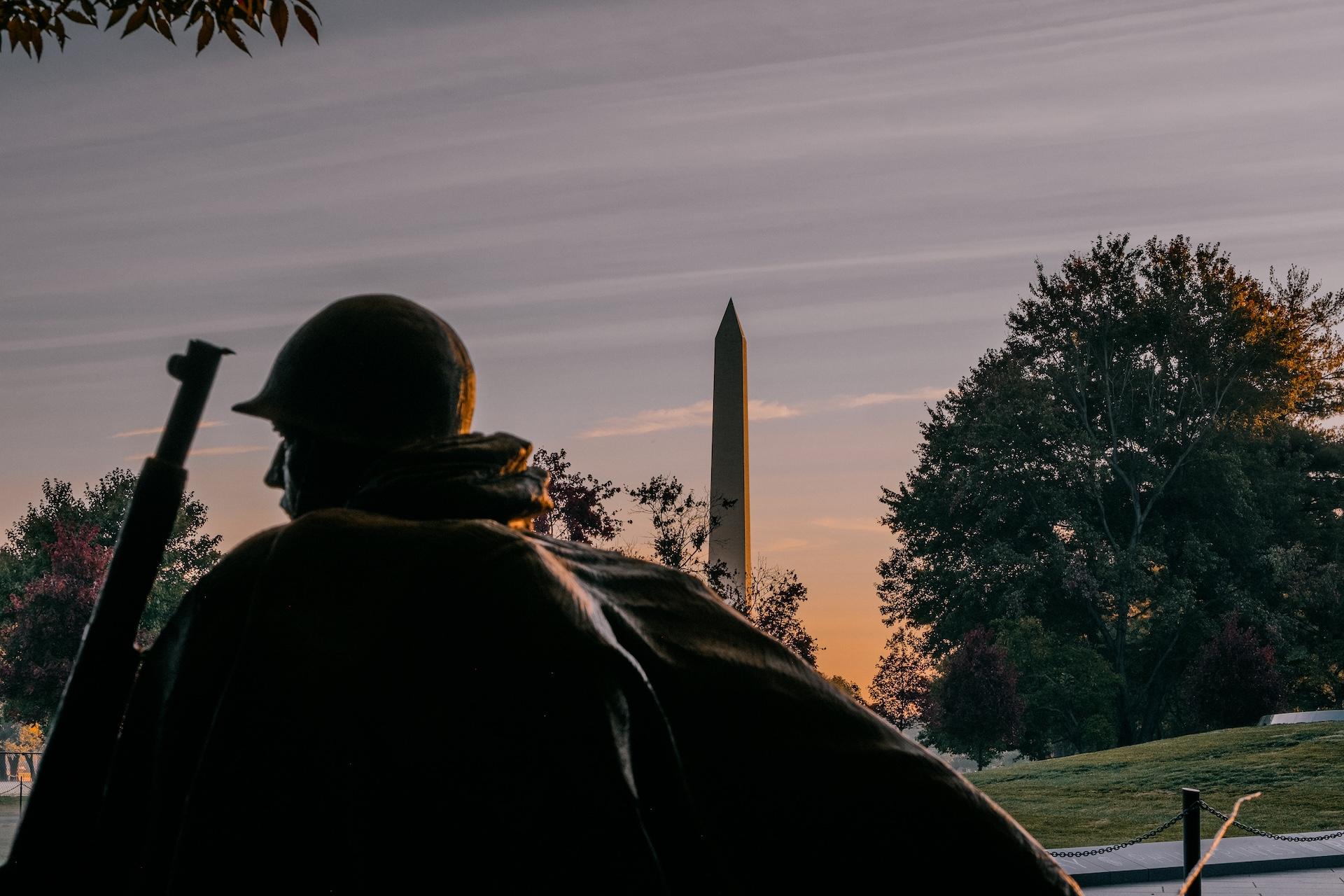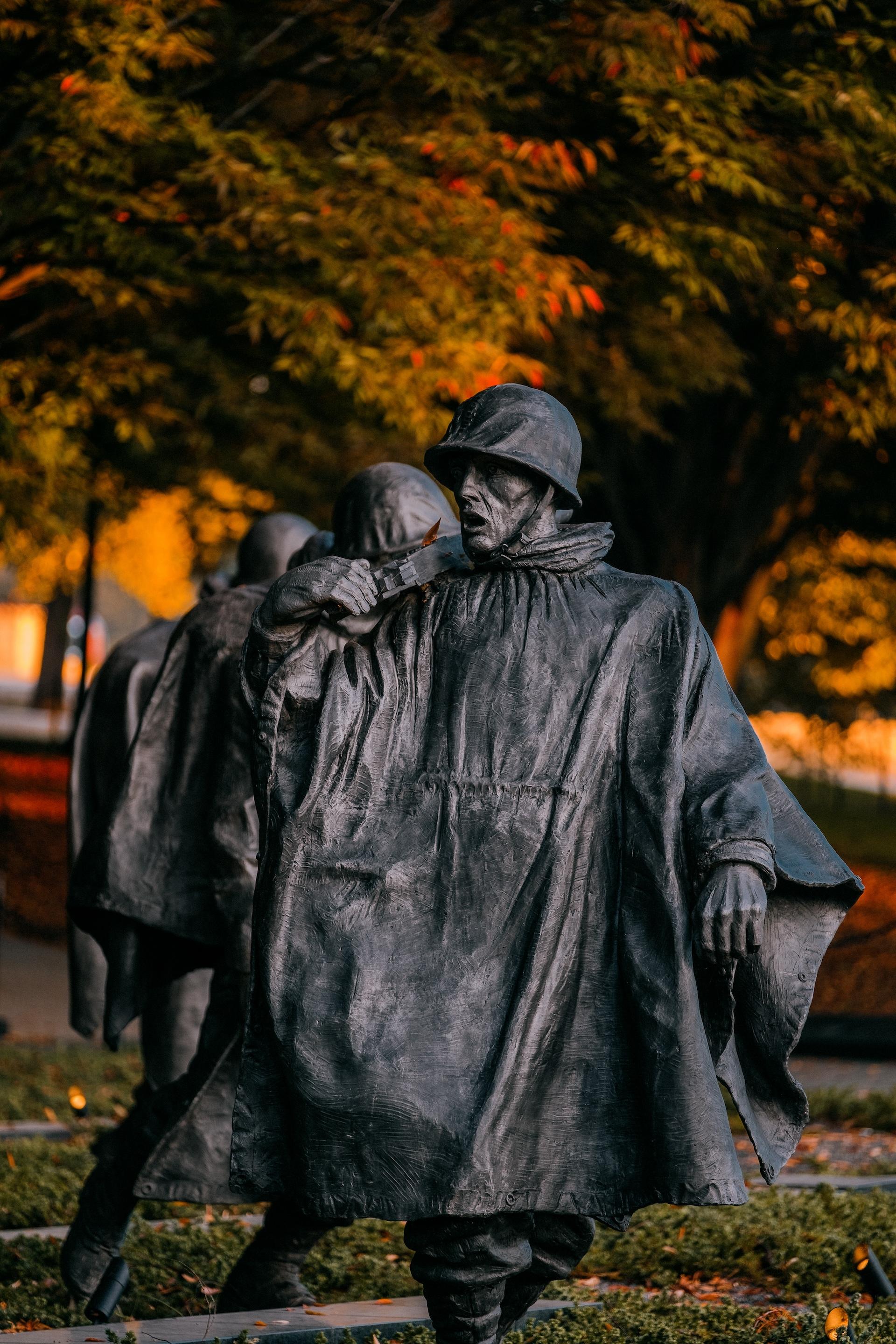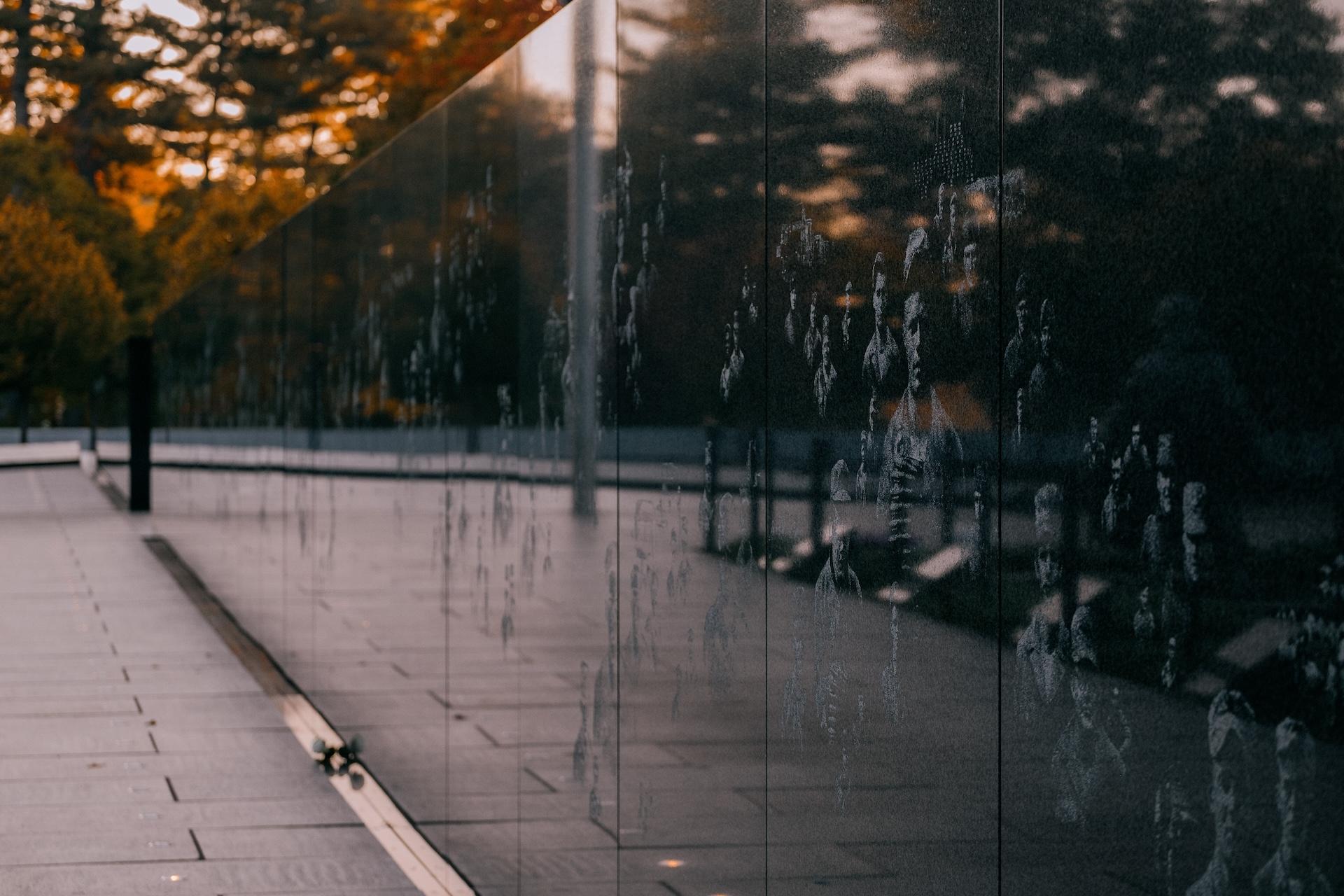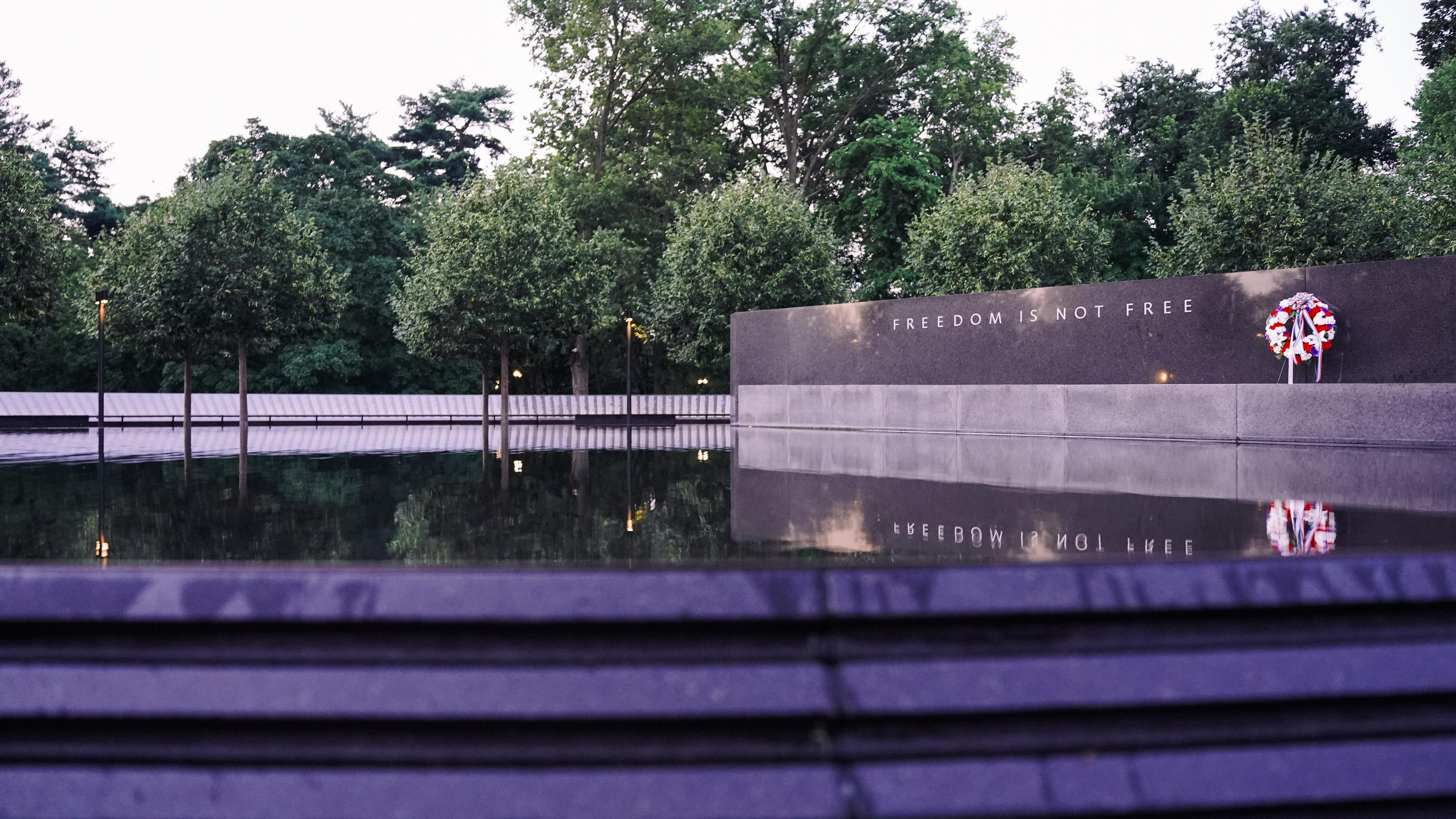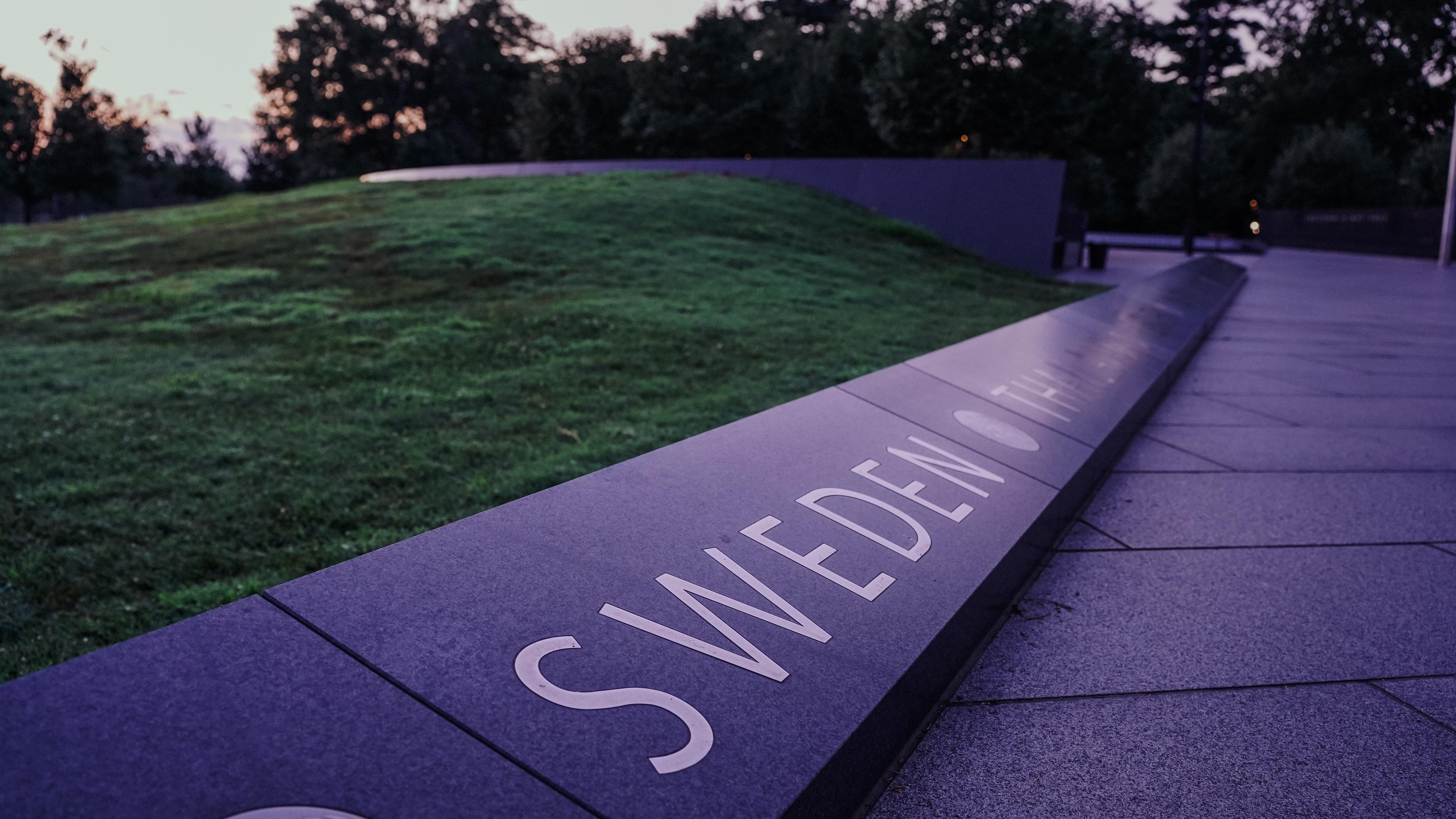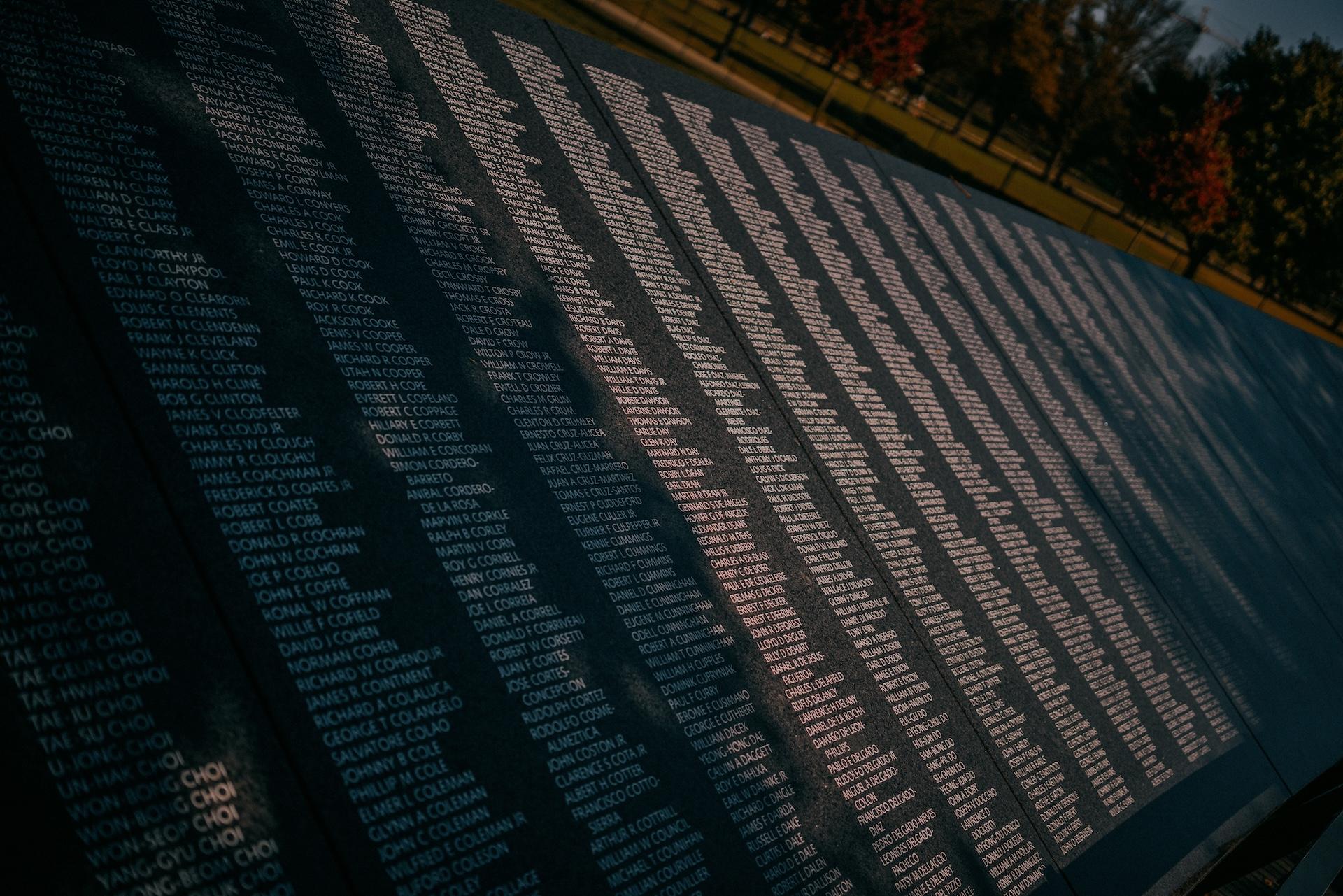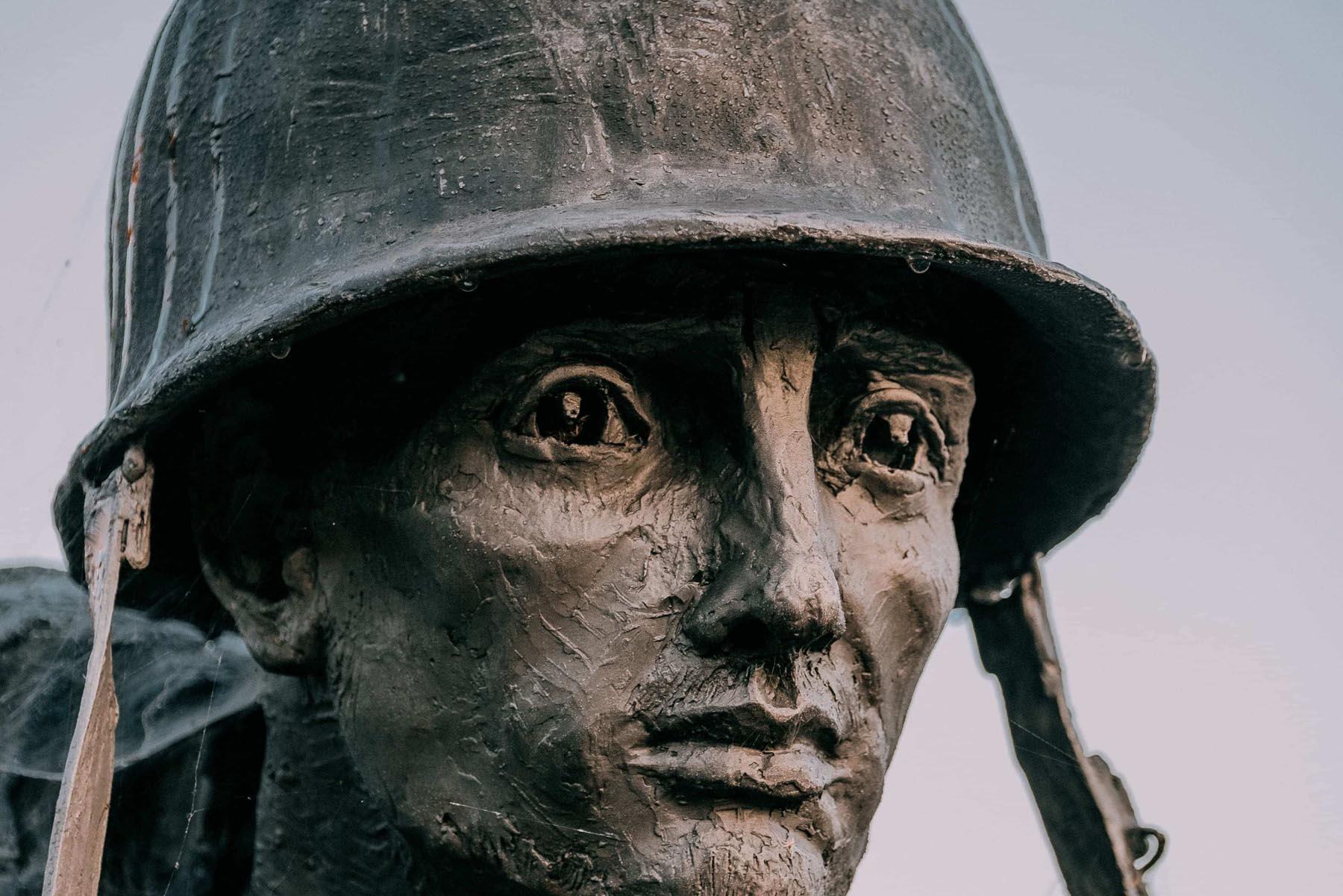
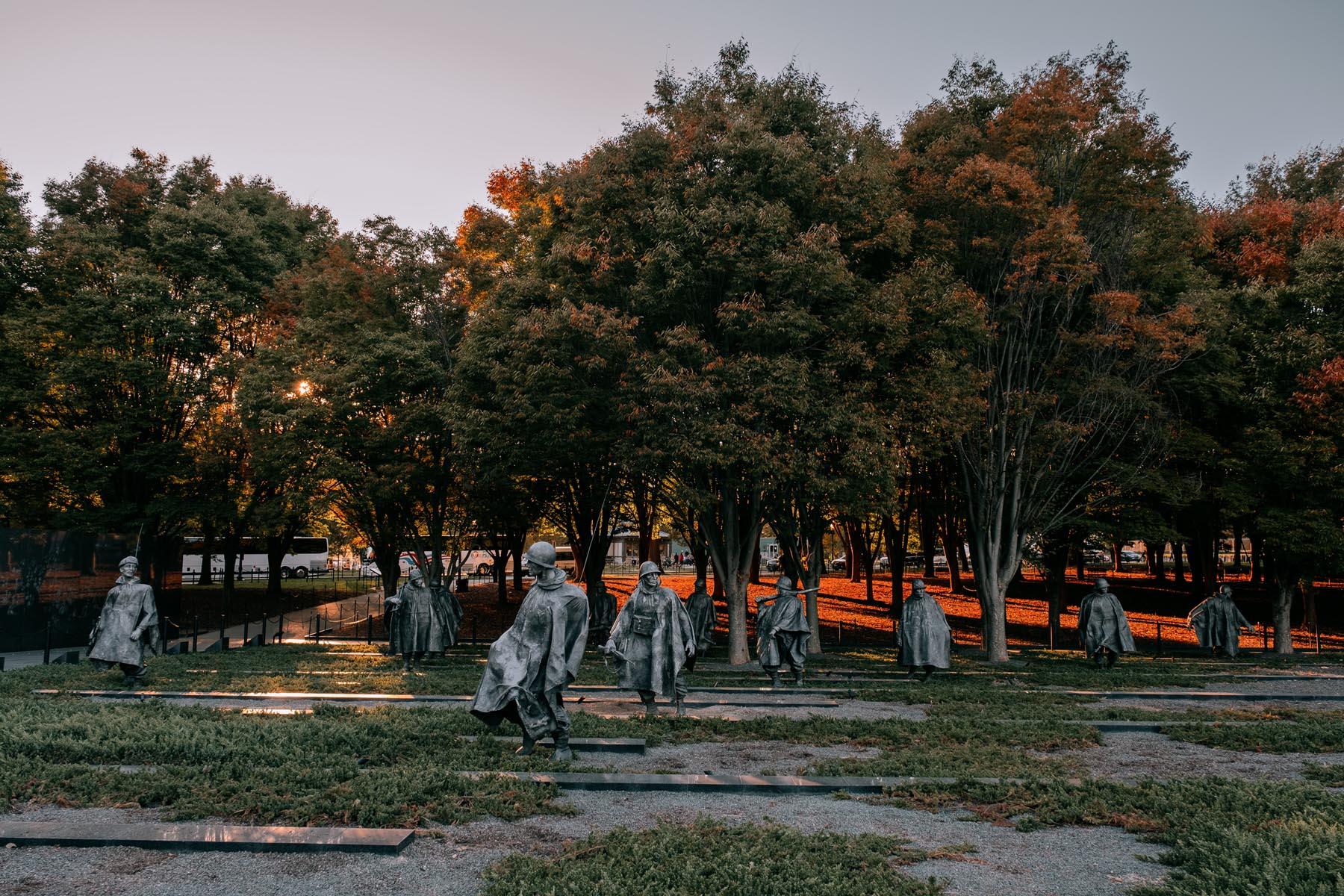
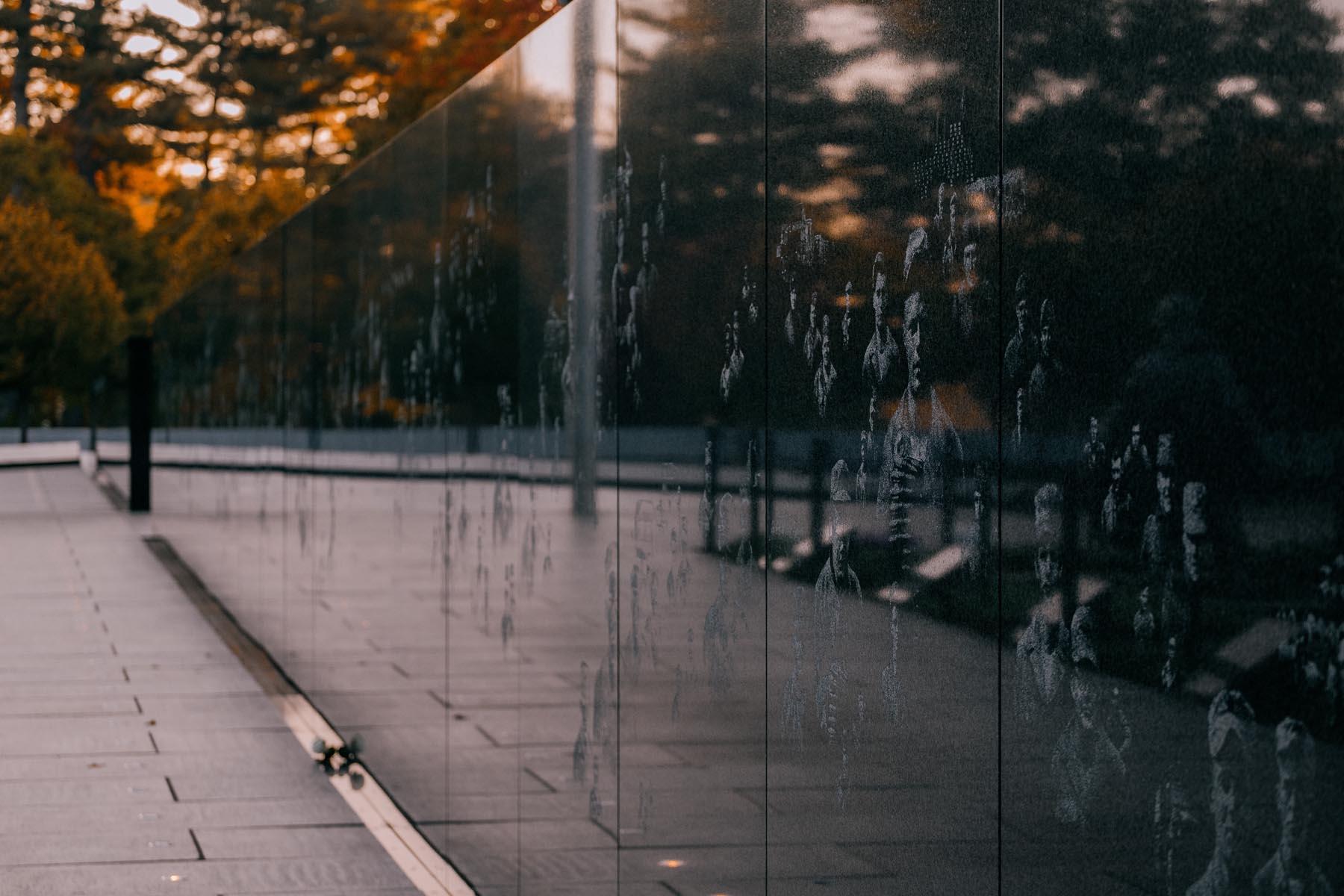
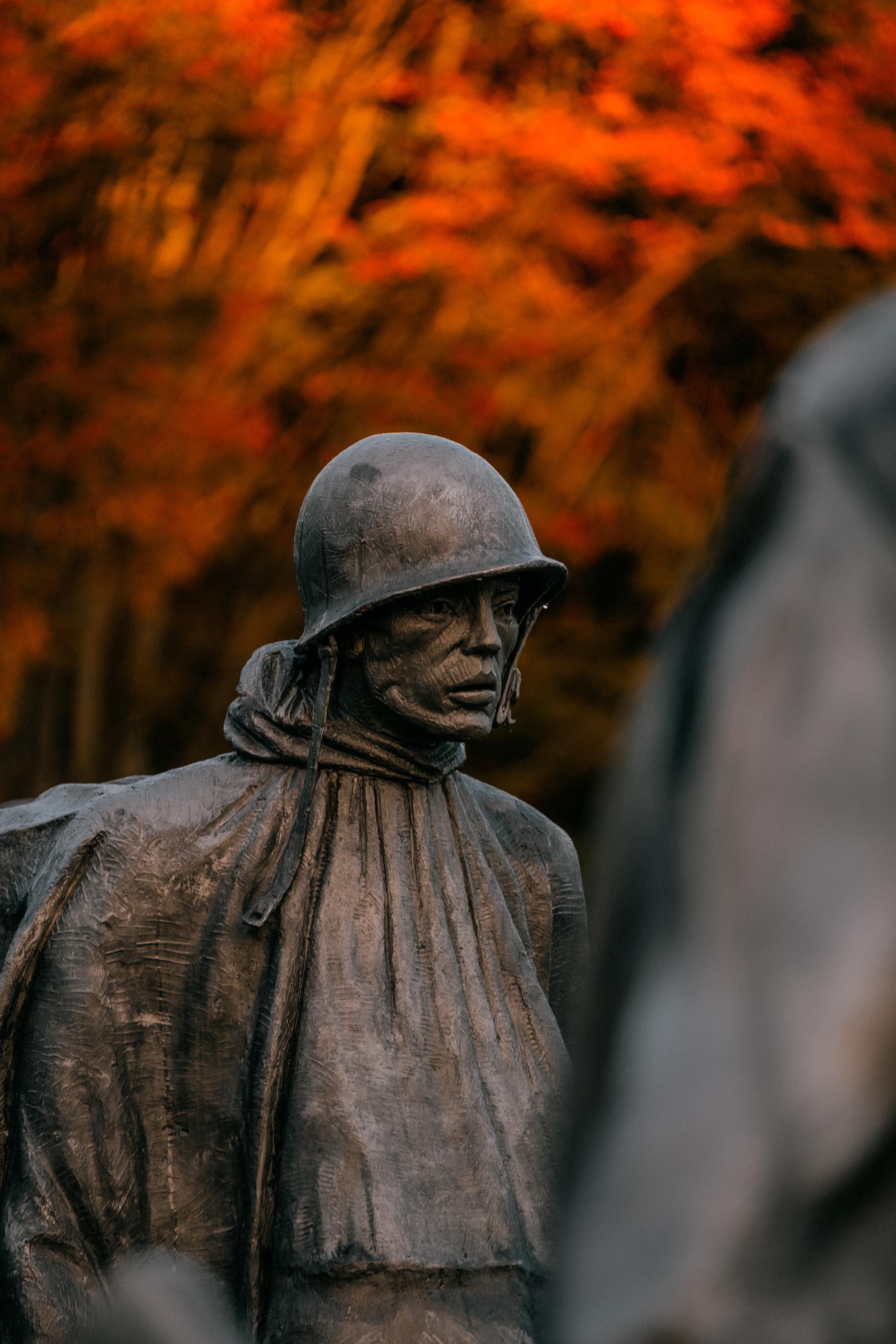
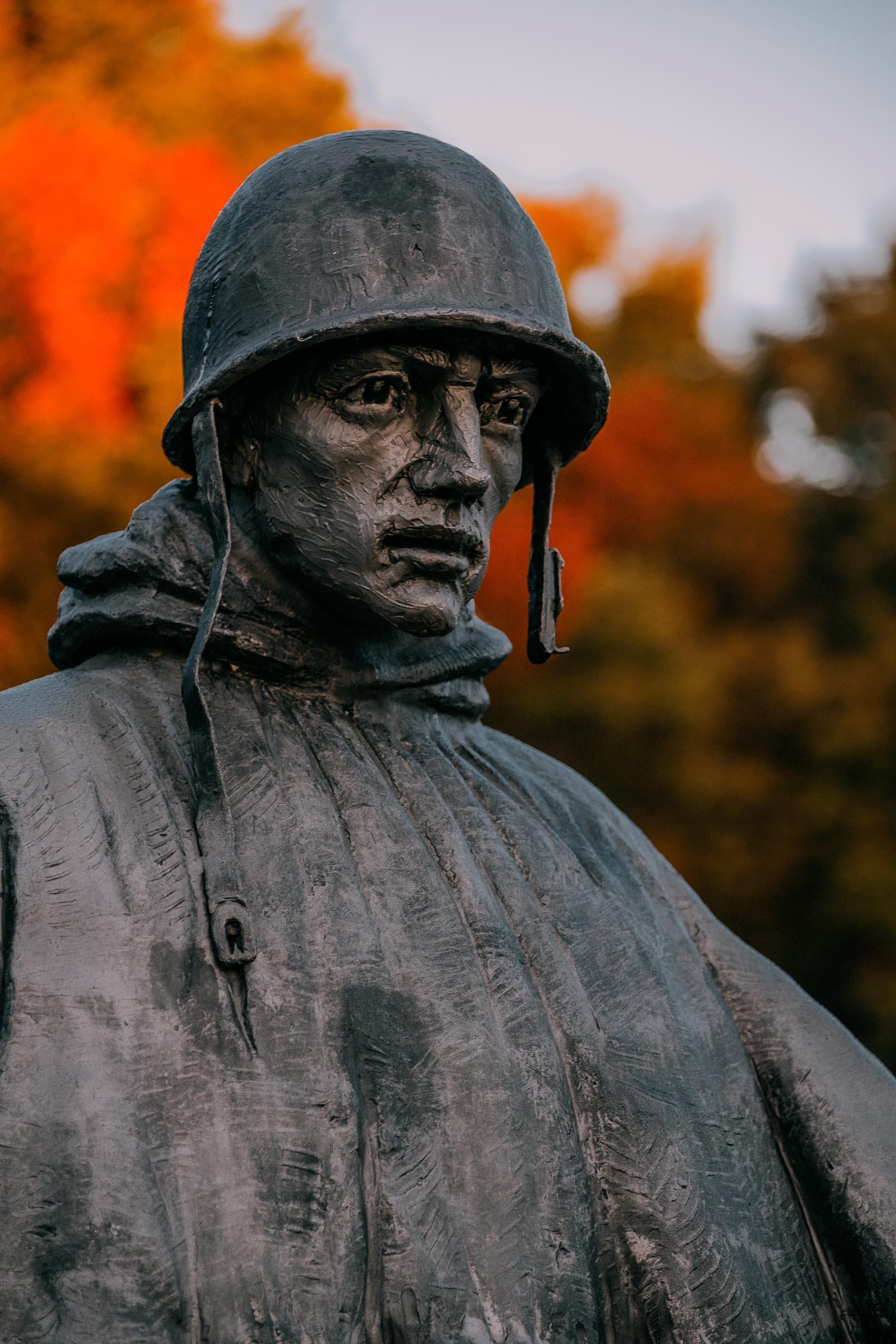
Korean War Veterans Memorial
900 Ohio Drive SW, Washington, D.C.
Amenities
- Wheelchair accessible
- Restrooms — Daytime hours vary
- Open 24 hours
- Food & drink — Across the street on southern side of Lincoln Memorial. Daytime hours vary
During the government shutdown, open-air Memorials will generally remain accessible to visitors. Restrooms, bookstores, gift shops, and information kiosk services may be suspended. For more information, please visit: doi.gov/shutdown.
The Korean War Veterans Memorial honors the U.S. Armed Forces and United Nations coalition forces members who served in the Korean War, particularly those who were killed, are still missing, or were held as prisoners of war.
The Korean War (1950-1953) was a conflict between North Korea, supported by China and the Soviet Union, and South Korea, supported by United Nations forces, primarily from the United States. The conflict found its roots in earlier post-WW2 tensions between North and South Korea, with events such as the Jeju Uprising and Soviet refusal to participate in UN backed elections, as well as undeclared border skirmishes which had been taking place since the end of WWII. Cross-border active conflict began on June 25, 1950, when North Korean forces crossed the 38th Parallel into South Korea. The conflict saw significant battles, including the Battle of Incheon and the Chinese intervention in late 1950.
The conflict ended with the signing of the armistice agreement at Panmunjeom on July 27, 1953, which established the demilitarized zone along the 38th Parallel, and though there have since been more minor conflicts in the region—the largest scale of which being the 1966–1969 Korean DMZ conflict—the armistice still holds today. The war resulted in approximately thirty-six thousand American military deaths in Korea—though it is difficult to get an accurate death estimate due to inconsistent record-keeping and widespread devastation.
The Korean War Veterans Memorial was authorized on October 28, 1986, and dedicated on July 27, 1995. Designed by Cooper Lecky Associates and sculpted by Frank Gaylord, it features nineteen statues of services members in ponchos emerging from the trees, a reflecting pool, a curb of UN support, the Wall of Faces, the Wall of Remembrance, and the inscription: “Freedom isn’t Free.” The landscape of granite and juniper symbolizes the rugged terrain of Korea and the Pool of Remembrance at the apex of the field symbolizes the Korean Peninsula.

Take a virtual stroll through this National Mall site
History
Timeline of events
North Korea invades South Korea after years of tension.
The Korean War starts.
The Battle of Incheon occurs, disrupting North Korean supply lines and leading to the recapture of Seoul.
Chinese forces enter the war.
An armistice is signed, ending active combat.
The memorial is authorized by President Ronald Reagan.
The groundbreaking ceremony for the memorial takes place.
The construction of the memorial begins.
The statues for the memorial are completed by sculptor Frank Gaylord.
The Wall of Faces is completed, featuring etchings of over 2400 photographs.
The Pool of Remembrance is completed, symbolizing the Korean Peninsula.
The nineteen Field of Service statues are installed, representing the hardships faced by troops.
The memorial is dedicated by President Bill Clinton.
The Wall of Names added. It lists the names of thirty-six thousand American and over seven thousand South Korean casualties.
Key Features
The memorial is a space for reflection and remembrance—and solemnity is represented in its design. The memorial is also unique in that it creates a sense of movement, and you feel as a visitor that you are walking with the soldiers.
Reflection Questions
High school learners: Our nation’s past is complex and often provokes reflection, especially as we look to the future. Here are a few questions to inspire deeper thinking:
- What is the significance of the 38th parallel in the Korean War?
- How does the design of the memorial reflect the experiences of soldiers during the war?
- What impact did the Korean War have on U.S. foreign policy?
Educational Activities
Other Resources
Interested in learning more? The following links will provide you with additional context and information:
